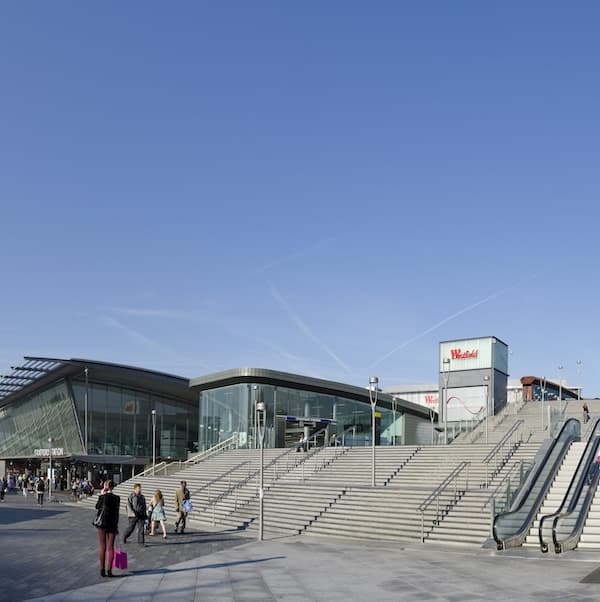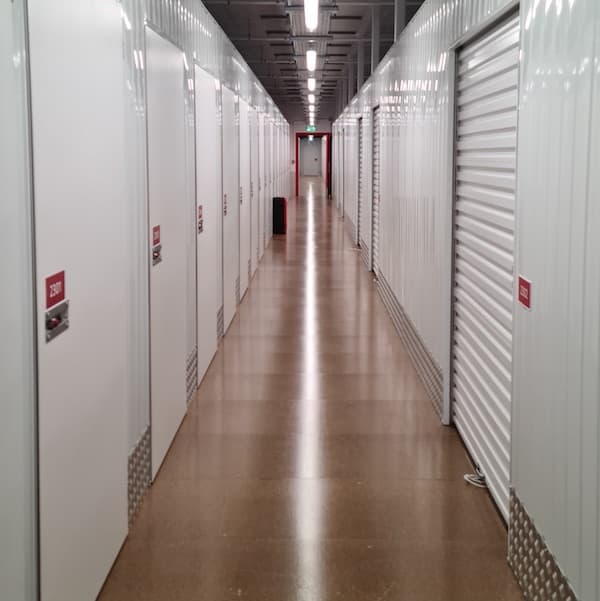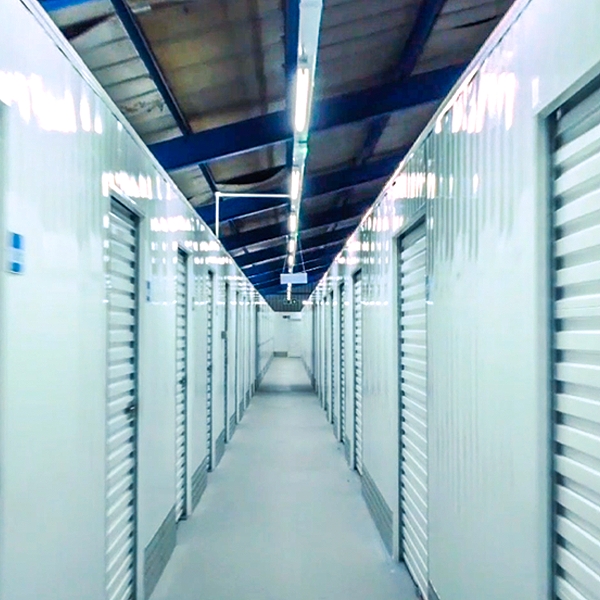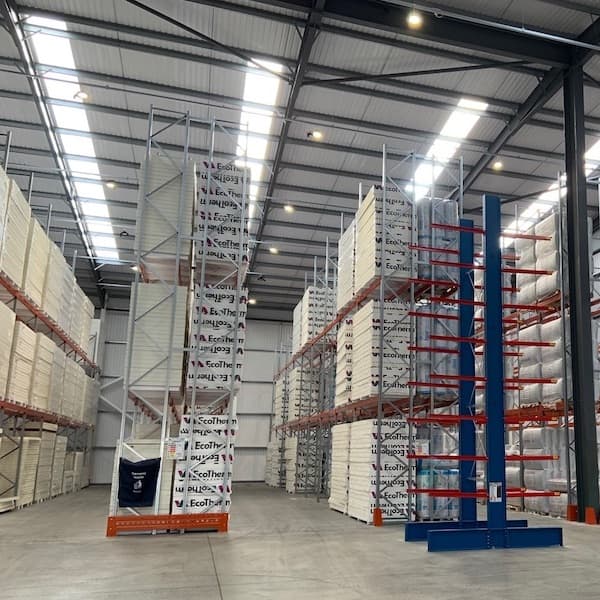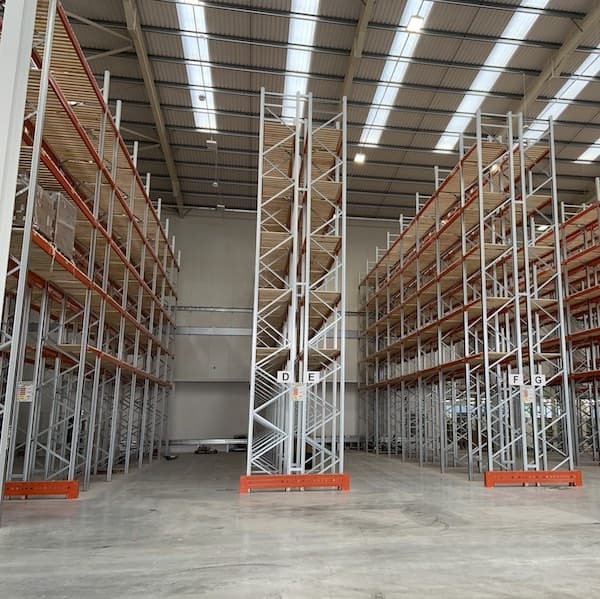- Mezzanine Floors
- Solutions
- Multi-Tier Mezzanines
- Mezzanine Pallet Safety Gates
- Mezzanine Staircases
- Mezzanine Handrails and Balustrades
- Mezzanine Decking
- Fire Protection for Mezzanine Floors
- Mezzanine Lift Shaft Design and Installation
- Resources
- Mezzanine Floor Calculator
- Mezzanine Floor Regulations and Building Control
- Self-Storage Mezzanine Floors
- Self-Storage Units
- Resources
- Self-Storage Site Selection Information
- Calculating The ROI of Self-Storage Conversions
- Planning for Automation in Self Storage
- Racking & Shelving
- Services
- Racking Design
- Racking Manufacture
- Racking Installation
- Racking Inspections
- Retail Racking And Shelving Systems
- Solutions
- Cantilever Racking
- Pallet Racking
- Coil Racking
- Longspan Shelving
- Tyre Racking
- Kimer Racking
- Live Storage Racking
- Drive In & Drive Through Racking
- Clip Shelving
- Mobile Shelving
- Custom Fabrications
- About Us
- USS Case Studies
- Self-Storage Fit-out For Raked Ceiling Building
- Mezzanine And Staircases For Entertainment Venue
- New Mezzanine And Staircases For Major Retailer
- Mezzanine Pallet Safety Gate
- Self-Storage Fit-Out Project For Brand New Facility
- Warehouse Racking, Wire Mesh & Shelving for New Warehouse
- Self-Storage Partition System & Components Installation
- Self-Storage Store Mezzanine And Staircases
- Multi-Tier Mezzanine For Logistics & Distribution Facility
- Warehouse Plant Platform
- Self-Storage Facility Space Expansion
- Mezzanine Floor For Distribution Warehouse
- Bespoke Feature Staircase & Mezzanine
- Single Level, Multi-Use Mezzanine
- Mezzanine For A New Building
- Mezzanine Floor For Plumbing Supplies Warehouse
- New Racking System and Mezzanine Floor
- Car Park Conversion To Self Storage Facility
- Pallet Racking and Cantilever Racking For Warehouse
- Two Mezzanine Floors For Self-Storage Facility In Birmingham
- Our Accreditations
- Contact Us
- USS Case Studies
- Audits and cycle counting
- Restocking and seasonal rearranging
- Shelving management
- Safety and quality assurance
- Managing shipments and deliveries
The Latest Blogs From USS
Exploring Retail Stockroom Management Best Practices
read
Do you know what’s in your stockroom? As a retailer, this may strike you as a fairly silly question, but it would be equally foolish and potentially damaging for a business – to assume that the answer to the question is yes.
It’s all too easy to concentrate on the shop floor in a retail environment and leave the stockroom to take care of itself, something which tends to work reasonably well until the day it doesn’t. The day you discover you’re out of a particular item or massively overstocked on another, that’s taking up valuable room with no prospect of being shifted any time soon.
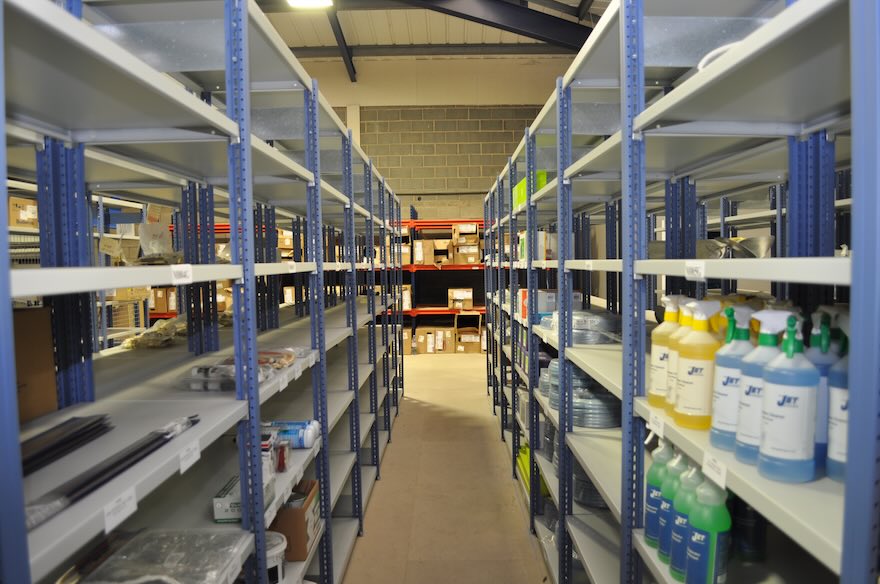
The mistake is to divide the operation of a retail outlet into silos, the shop floor being one - and the stockroom another. The truth is that the stockroom is simply an extension of the shop floor. Suppose you want that shop floor to be a welcoming space with neatly ordered displays, plenty of room for shoppers to move and browse, and a system that makes it easy to track down individual items when needed. In that case, you will have to work to ensure the same is true of your stockroom.
Not Simply A ‘Nice To Have’
A well-managed stockroom is more than just an added bonus in a retail set-up.
Successful retail operations require careful inventory management, and the stockroom directly represents that. It should address the stockroom's physical space, the systems in place, and the people who work there.
Time after time, research has demonstrated two things – the widespread nature of stock mismanagement in retail operations and the hugely negative impact this can have on the bottom line.
Here’s what the research tells us. Carried out by the Retail Industry Leaders Association (RILA) – in conjunction with the University of Leicester –this piece of research estimated that 60% of all Stock Keeping Units (SKUs) are inaccurate!
For an individual business, misleading SKUs can cause chaos with operations such as restocking and maintaining supply lines. Put that On a global basis, the impact of misleading data on stock levels can be huge, with Blue Yonder stating ‘inventory distortion’ costs of $1.77 trillion in 2023, with out-of-stocks accounting for $1.2 trillion and overstocks totalling $562 billion.
Huge numbers, indeed. Not all research into inventory mismanagement focuses solely on identifying the type and scale of the problem; there’s plenty of insight into how these problems can be mitigated.
A three-year study by European university experts, working with seven of the continent's largest retailers, quantified "inventory record inaccuracy" (IRI) and demonstrated the positive impact of addressing it.
Among their findings was confirmation of the 60% inaccuracy figure. They also discovered inaccuracies were as likely to be negative (stock present but uncounted) as positive (stock counted but not present).
Fix Your Inventory, Boost Your Sales
The study's focus on approximately one million SKUs suggests highly reliable findings scalable to individual retail businesses. Not surprisingly, retailers who corrected their inventory inaccuracies saw sales increases of 4% to 8%.
Finally, the report noted inventory accuracy tends to decline over time after a stock count. These combined findings suggest controlling inventory, managing a stockroom, and precisely tracking item movement should be viewed as a sales-boosting strategy rather than simply an expensive necessity.
The answer to the ‘why’ of stockroom management is as simple as ‘Because it will help make your shop more money”.
Unlocking The Stockroom’s Profit Potential - Focus on Five Areas
Let’s move on to the ‘how’. Predictably, this is a little more complicated than the ‘why’. Every stockroom is different, depending on the size of the retail outlet it serves and the number and type of items that require processing. There are, however, certain principles of effective management strategy which can be applied across virtually every kind of stockroom, and this article will examine a few of them:
Counting
We'll discuss inventory management software later, including its impact on gathering and analysing data about item movement. However, even the best software can't replace the simple accuracy of a physical inventory count for confirming actual stock levels.
Shoplifting, employee theft, and return fraud create discrepancies between assumed and actual stock. A physical count quickly uncovers these discrepancies. Naturally, such a count is more manageable in a spacious, well-lit stockroom with accessible and organised stock.
Layout
Consider these questions about your stockroom: How often do you need to enter it? How long does it take to find what you need? Does it also function for packing and shipping? Your answers will reveal if your current layout is genuinely practical. Stockroom strategies often evolve organically as a business grows, but an audit like this allows you to rethink the organisation. Consider grouping items by size, product type, popularity, or other metrics aligned with customer demand.
Work from the ground up, plan the layout of shelving rows and columns, accounting for additional items like filing cabinets, desks, and boxes. Shelving typically forms the core of stockroom storage, so maximise vertical space by building upwards (while ensuring safe access).
Explore different types of shelving—adjustable shelving for varied item sizes, heavy-duty shelving for bulk storage, or specialised racking for oddly shaped goods.
Installing a mezzanine floor could be ideal if your stockroom is too small but has vertical space. A mezzanine creates capacity without expanding the stockroom's footprint (preserving valuable retail space).

Mezzanines often don't require planning permission, although you should always check and can effectively separate storage from packing, shipping, and administrative areas. Suitable shelving and a well-planned mezzanine can transform your stockroom from a cramped storage space into an efficient, organised hub.
No matter what layout you opt for, the stockroom should be set up to allow for future growth and/or change. Modular or mobile shelving solutions will make it easier to shift the layout as and when demand dictates and will create a flexible stockroom space that can adapt swiftly to the likes of seasonal shifts or changes in the wider marketplace.
Guidelines For Stockroom Processes
It’s a truism, but like many truisms, it also applies in the real world to say that the world's most carefully planned and designed stockroom will only ever be as effective as an inventory management tool as the people working in it.

Break down and analyse the various tasks performed within the stockroom and create written documentation detailing each best-case scenario. It may seem like a lot of work initially, but it will create a firm foundation to rely upon in the future, particularly when things go wrong. If some aspect of the stockroom management isn’t functioning as it should, a written breakdown of precisely what should happen will make it easier to figure out why. Processes which can be broken down and detailed in this manner include:
For each process of this kind, you could produce a list of steps setting out which members of the team should be doing what, how they should be doing it and when the task should be performed. This will underline best practices for existing employees and make it much easier to train newcomers up to the correct standard for your stockroom.
Create KPIs
The natural extension of auditing stockroom activity and setting out best-case scenarios is to introduce Key Performance Indicators (KPIs) to measure the workflow through the stockroom.
Aspects of stockroom management that could be subject to KPIs include taking delivery of new stock, unpacking, labelling and organising that stock, shelving the stock in the stockroom, and restocking when supplies of a certain item are running low. It will probably be easier to meet KPIs and embed best practices. If certain team members are assigned specific responsibilities, then make sure these individuals know that they are in charge of tasks and their duties.

This could include things like taking note of incoming supplies, performing a regular inventory of numbers in the stockroom, ensuring that goods are placed on the right shelves in the right part of the stockroom, overseeing picking and packing operations (for bricks-and-mortar retail stores that also have a delivery-based online offering), and regular KPI reporting.
Inventory Management Tools
Investing in inventory management software helps with tedious tasks like labelling, reducing time and human error. More importantly, it automates stock tracking using SKU mapping, RFID, barcodes, and handheld scanners. This stockroom data links with the retail store's POS system, simplifying item tracking from sale to delivery. These systems can even automate reordering.
Final Thoughts - Create The Right Space and the Right People
Even the most advanced software performs best in a well-organised, well-lit, and comfortable stockroom. Prioritise "low-tech" essentials and make them the best possible —well designed shelving and racking, regular cleaning, and clear signage—to maximise the benefits of high-tech automation.
Ultimately, even the best software and meticulously organised stockrooms are only as good as the team managing them.
Skilled and motivated staff are essential for genuinely efficient stockroom operations. It's the combination of the right people, the right processes, and the right technology that unlocks a stockroom's full potential.
This blog is for information purposes only and should not be construed as legal or financial advice and not intended to be substituted as legal or financial advice.
Find Us
S & L United Storage Systems Ltd
United House, The Street
Takeley, Bishop's Stortford
Hertfordshire, CM22 6QR
Company No. 1313816
VAT No. 291616253Say Hello
01279 871 787Copyright © 2025 S & L United Storage Systems Ltd. All rights reserved.
- About Us

